Beryl - Mineral Properties, Varietes and Occurence
Beryl is extremely popular mineral, which occurs in a diversity of shapes and colors. Popular gemstone varietes include emerald, aquamarine and heliodor. Beryl is the only common source of beryllium, which is used in many hi-tech applications.
Structure of Beryl
Beryl is a complex aluminosilicate of beryllium (Be3Al2Si6O18) and belongs to the cyclosilicates group. Cyclosilicates have closed cycles made of SiO4 tetrahedrons in their structure: in the case of beryl, cycles made of six SiO4 tetrahedrons. These cycles are stacked on each other and result in channels inside the structure. The channels in the beryl structure can be empty and result in vacant structure positions but may also accommodate small amount of water, CO2 or alkali metals like sodium (Na) or caesium (Cs).
When the Cs content in channel structure becomes very high, part of the beryllium in the structure must be replaced by lithium (Li) to balance the charge. Then the crystal's symmetry becomes distorted to trigonal and the mineral is then classified as pezzottaite (CsBe2LiAl2Si6O18). Pezzottaite is pale to dark pink and very similar to the pink beryl variety, morganite.
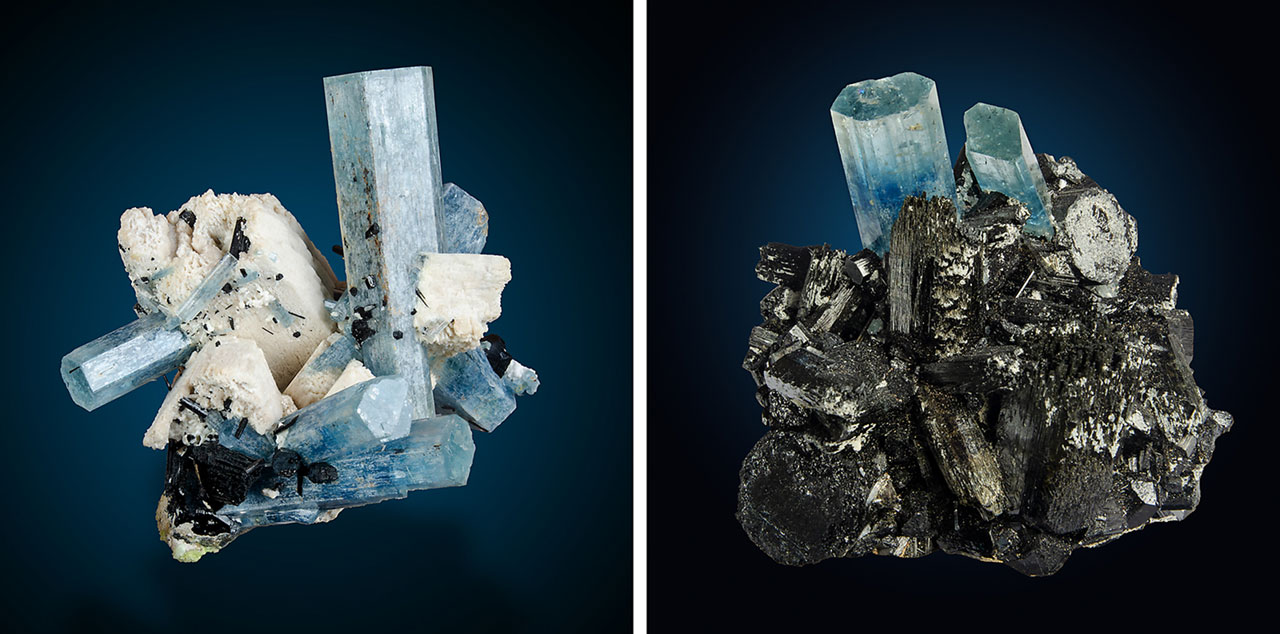
Beryl has hexagonal symmetry and usualy occurrs in simple long hexagonal prisms. Short prismatic crystals are much less common, but are typical for the morganite variety. More complex crystals with hexagonal pyramids and complicated habits are also known. Etched beryl crystals - especially aquamarine and heliodor varietes - are known from many pegmatites.
Physical properties of Beryl
Beryl registers hardness 8 on the Mohs scale - the extreme hardness is the easiest identification property. Notably, beryl displays unusual physical and chemical resistance to acids. Luster of beryl is vitreous, sub-vitreous, waxy or greasy. It is a brittle mineral with conchoidal fracture and imperfect basal cleavage {0001}. Depending on the exact chemical composition, density varies between 2.63 and 2.92 g/cm3.
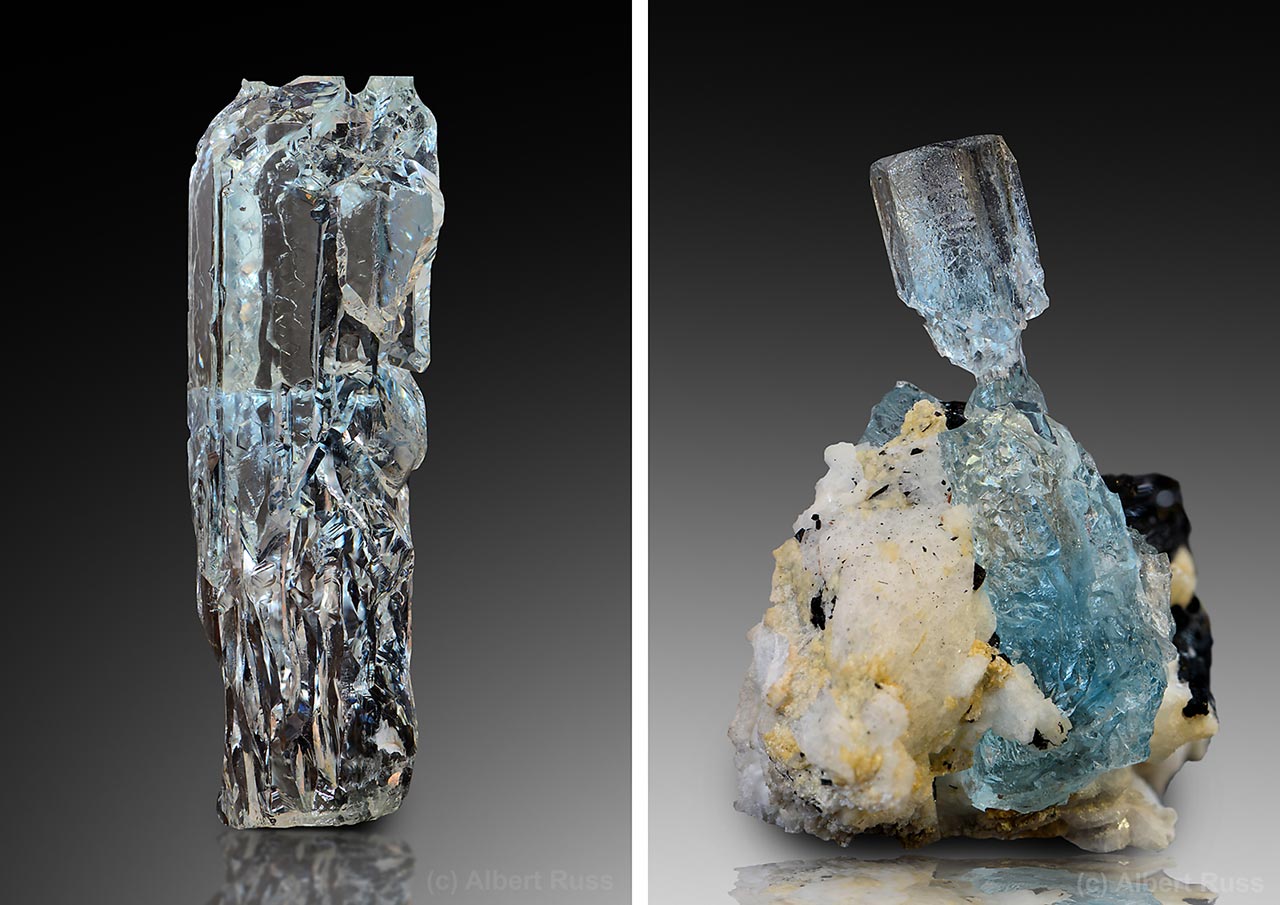
The color of beryl is caused by inclusions and trace elements. Typical beryl is not transparent and usually has a yellow-green or pale green color. There are also numerous color varietes: blue (aquamarine, maxixe, alkali beryl), yellow/gold (heliodor), green (emerald), pink (morganite), cherry red (bixbite), clear (goshenite).
Similar Minerals
Pale common beryl is quite similar to quartz and it also forms hexagonal prisms. Spotting pale green or yellow beryl in the coarse grained pegmatite loaded with quartz is often quite difficult. The other very similar mineral is apatite, which also forms green or blue hexagonal prisms and unfortunately often occurs in the same pegmatites as beryl. Apatite is much softer and can not scratch glass like beryl.
Applications of Beryl
The obvious application is of course in gem industry. Natural, synthetic and heat-treated or irradiated beryls are very common and highly priced gems. All gemmy beryl varietes are faceted, only trapiche emeralds are mostly polished into cabochons. The most common is aquamarine, other varietes - heliodor, morganite or bixbite - are quite rare. Emerald has a category of its own as the best quality emeralds are very rare and extremely expensive.
Beryl is the only source of beryllium, which is necessary for production of many hi-tech alloys. Unfortunatelly, beryllium is also very toxic. In some cases, prolonged exposure to beryllium - particularly through breathing - results in an acute pulmonary condition called berylliosis.

The hardness of metals like aluminum and copper is greatly enhanced when they are alloyed with beryllium. These materials are used in hi-tech engines like Formula 1 or in space and military aircraft, rockets, and missiles. Alloys with iron or nickel are used in non-sparking and highly durable tools and surgical instruments.
Beryllium's low atomic number and low absorption for X-rays makes it an excellent material for radiation windows in X-ray tubes. Likewise, beryllium's extreme thermal stability, diamagnetic nature, and minimum interference with energetic particles makes it an ideal candidate for the vacuum-tight beam tubes and windows found in some types of spectrometers and particle colliders.
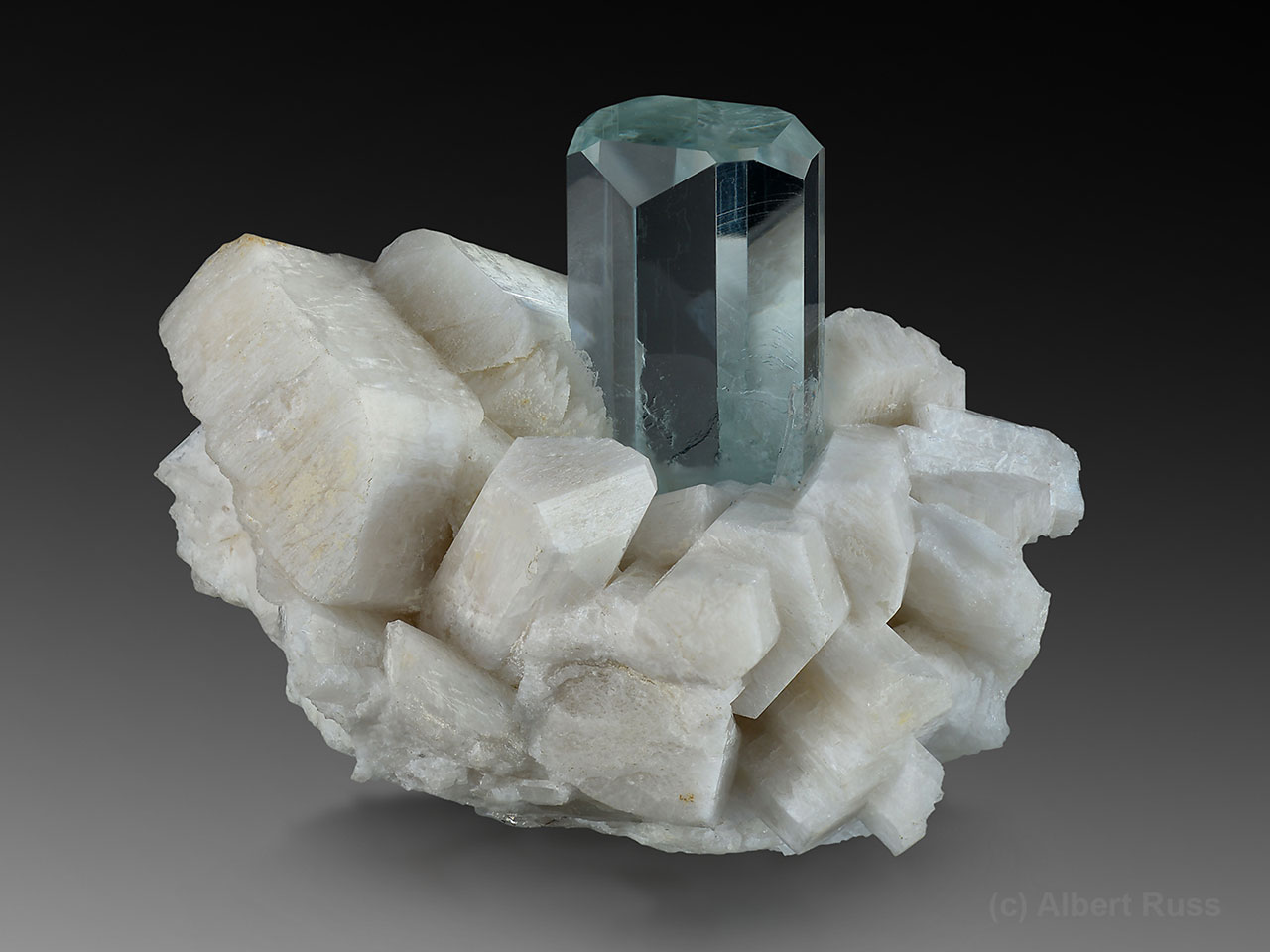
Beryllium's high durability and low thermal expansion is key in producing mirrors for many hi-tech applications, including optical-guidance and fire-control systems. Able to resist extreme temperatures, beryllium mirrors are mounted in honeycomb support strutures used in meteorological satellites and space telescopes. The optical performance of these important scientific tools can be enhanced using a nickel or gold coating.
Beryllium is non-magnetic, which makes it an excellent tool for handling delicate magnetic devices such as the magnetic fuses in naval mines, radio communication, and radar devices or MRI.
Beryllium is a good neutron reflector and it is widely used in many nuclear applications. It is used as a moderator in nuclear reactor, as filler in fuel rods, and as a neutron source during the construction phase of both atomic and plutonium bombs. Beryllium fluoride is used in modern molten salt reactors and liquid thorium fluoride reactors.
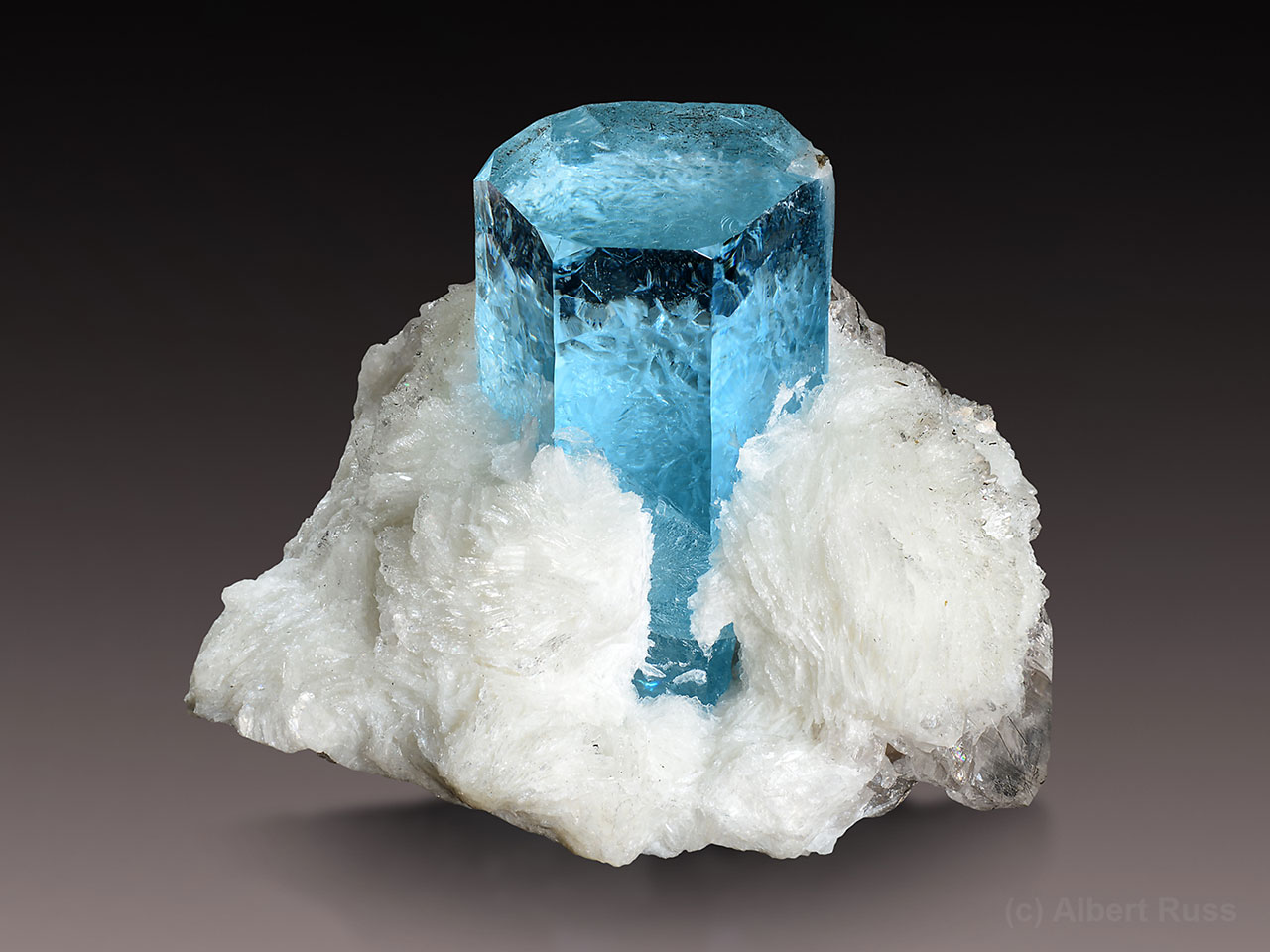
Beryllium is also used in high-frequency speaker drivers, electronic circuit boards and some modern semiconductor materials. Beryllium oxide is used in transistors, radio frequency transmitters and nuclear fuel pellets.
Origin of Beryl
Beryllium occurs in very low concentrations in crustal rocks - just about 3 ppm. But only few minerals can accomodate Be in their structure, which means that it will concentrate to quite high levels during solidification and chemical evolution (fractionation) of magmatic rocks. The most evolved granitic melts which solidify last - usually greisens and pegmatites - are often very rich in beryllium.
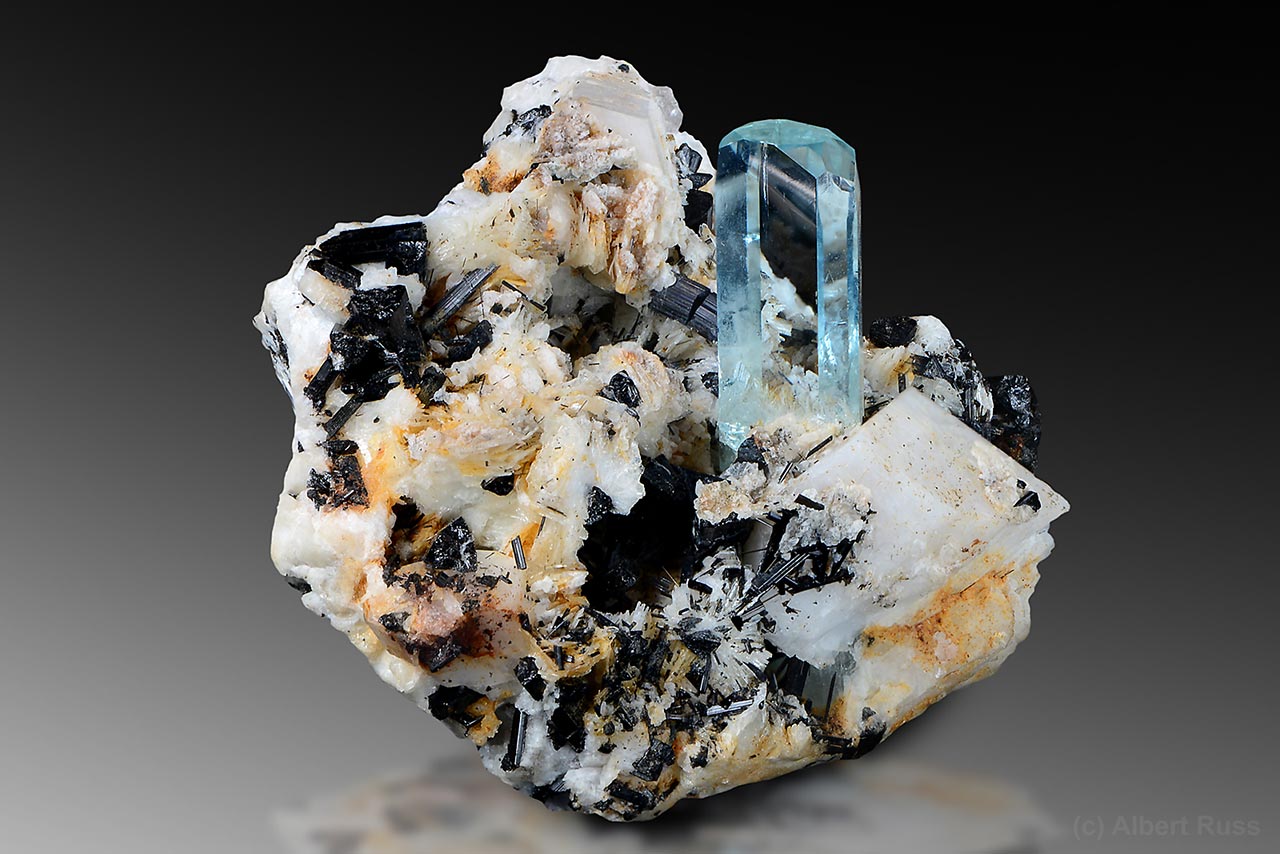
Beryl is quite common in many pegmatites and it is also often associated with greisens. It commonly forms green prismatic crystals but can evolve into more special beryl varietes in the inner zones of pegmatites. While the outer zones crystallize from the magmatic melt and form typical common yellow-green beryl crystals, the inner zones can crystallize from late hydrothermal fluid phase and form gemmy aquamarine, heliodor or morganite. Sometimes, later generations of beryl grow on the older crystals, and form Cs- or Na- rich outer zones.
Beryl can be altered by hydrothermal fluids during solidification in some highly evolved pegmatites. This means that the fluid phase corrodes the early formed beryl crystals. Old beryl becomes etched or pseudomorphed by more rare beryllium minerals like bertrandite, euclase or phenakite together with albite, K-feldspar, quartz and clay minerals.
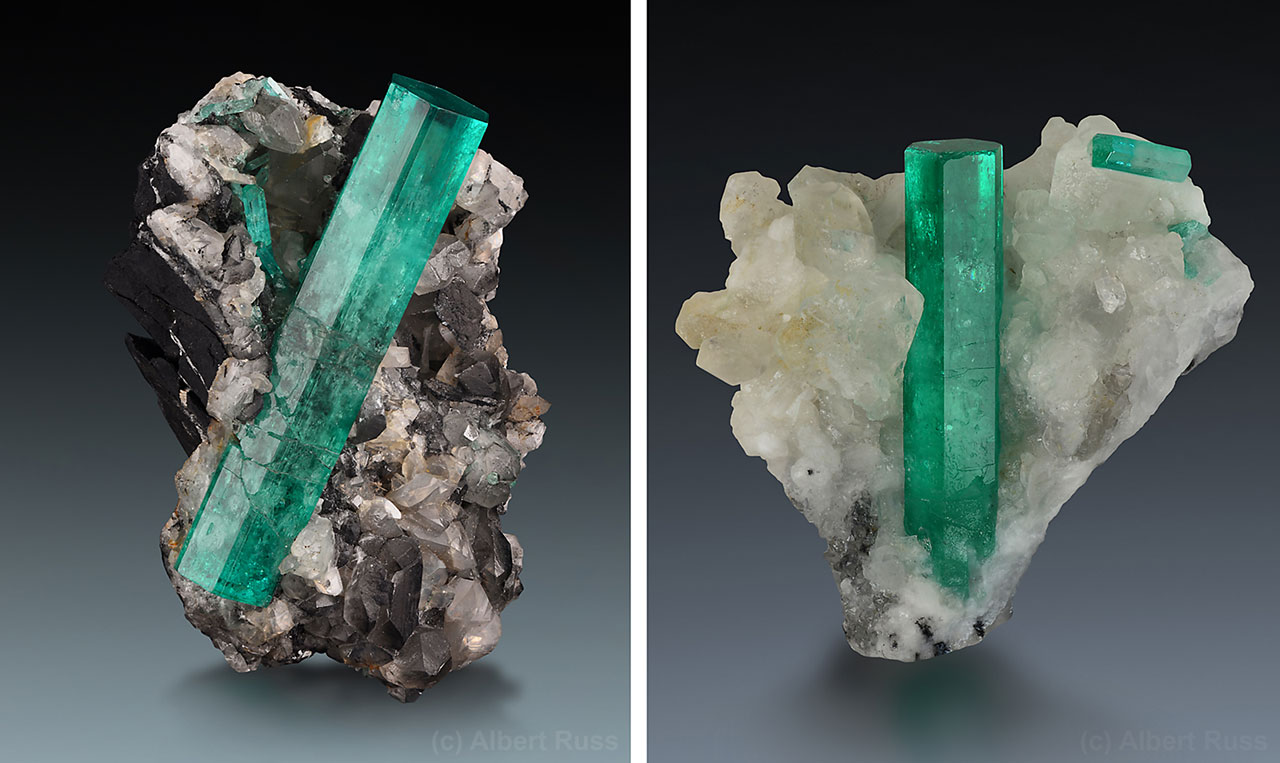
The other rocks accomodating beryl include some types of mica schists, skarns, rhyolites and some hydrothermal veins. Emeralds often occur in mica schists rich in both beryllium and chromium. Beryl also occurs in alpine type veins in the beryllium-rich rocks.
Beryl Varietes
Beryl varietes are defined by their colors, which are almost fully controlled by the presence of the small amount of metals in the beryl structure. Most of the beryl varietes are very popular among collectors and aesthetic crystals on matrix are very expensive. Good quality gemmy emeralds are much more rare and expensive then diamonds. On the other hand, common beryl is quite widespread.
- Common Beryl - yellow, yellow-green, pale green
- Aquamarine - light blue
- Heliodor - saturated yellow, gold or green-gold
- Emerald - pale grass green to saturated dark green
- Morganite - pink
- Bixbite - cherry red
- Goshenite - colorless
Common beryl
Both LCT and NYF pegmatites often contain beryl, as well as certain metamorphic rocks rich in berylium may host beryl crystals. These beryl crystals are usually not translucent and colored pale green, yellow-green, grey-green or almost white. Despite the overall scarcity of beryllium in nature, beryl crystals in certain pegmatites are quite abundant and individual crystals can reach several meters in size.
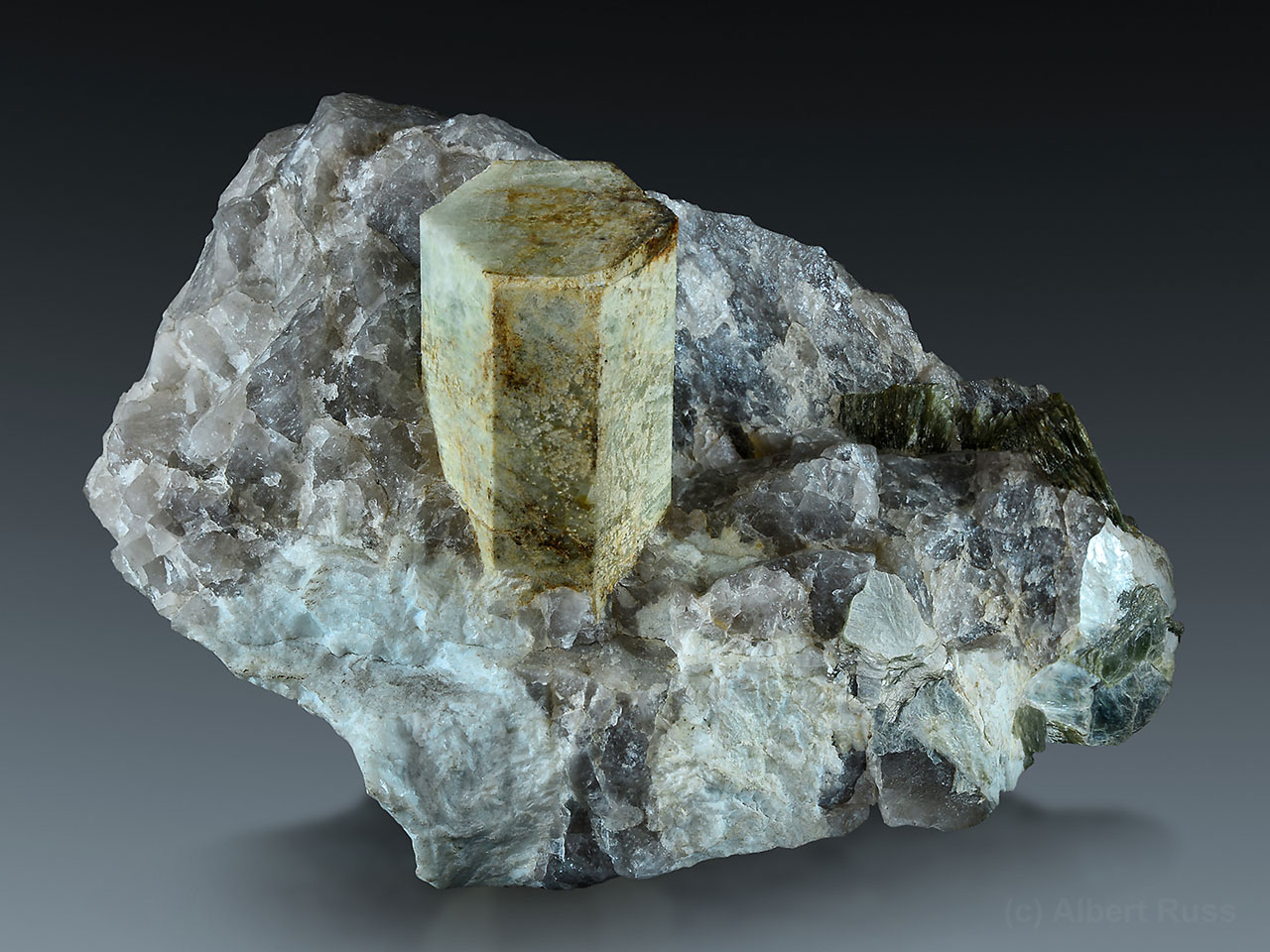
Aquamarine
Aquamarine is named after its sea water color (aqua marina in latin). It is colored by the Fe2+ in the structure. Aquamarine is typical in beryllium rich pegmatites and often reaches gem quality. It is a late-stage product, which typically forms in the pegmatite pockets. Excellent aquamarine crystals associated with feldspars, smoky quartz and schorl are very popular and highly prized. Deep blue aquamarines from Madagascar are sometimes known also as maxixe - although this form has the unfortunate feature of losing its color when exposed to sunlight. Aquamarines can be irradiated and turned into much more expensive heliodor.
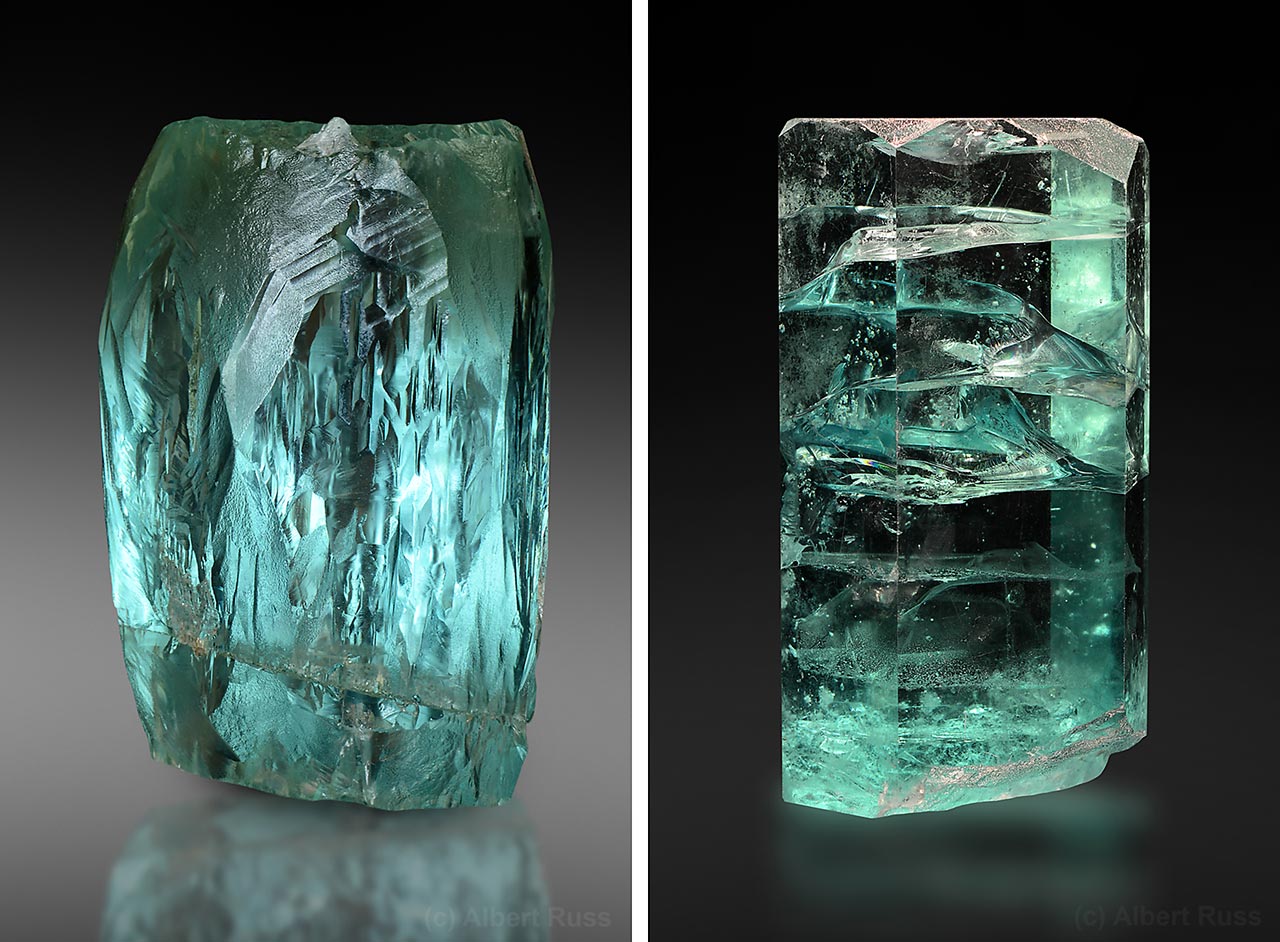
The ultimate aquamarine producer is definitely Brazil with main deposits Jequitinhonha valley and Medina (Minas Gerais), Guaratinga (Bahia) and Mimoso do Sul (Espírito Santo). Numerous great localities are located in Pakistan in Hunza Valley (Gilgit) and Shigar Valley (Skardu). Excellent deep blue crystals are mined in the Erongo area, Namibia. Other famous localities include Mt. Xuebaoding (Pingwu) in China, Sahatany Valley in Madagascar, Murzinka and Adun-Chilon in Russia and Mogok in Myanmar. U.S. localities include famous Mt. Antero in Colorado - where the popular Prospectors show was filmed - the Sawtooth Mts. in Idaho, Cahuilla Mountain and the California Blue Mine in California, and Haddam and Portland in Connecticut.
Goshenite
The colorless clear variety of beryl is called goshenite. It was first discovered in Goshen, Massachusetts. Very pure beryl without impurities and inclusions is clear and colorless. This might lead to an assumption that the goshenite is the most pure form of beryl. However, this is not the case. In fact, goshenite often contains common impurities like iron. Heat treated or irradiated goshenite often turns into the blue or yellow color. Bigger pieces of goshenite were once mined as a precious material for optics.
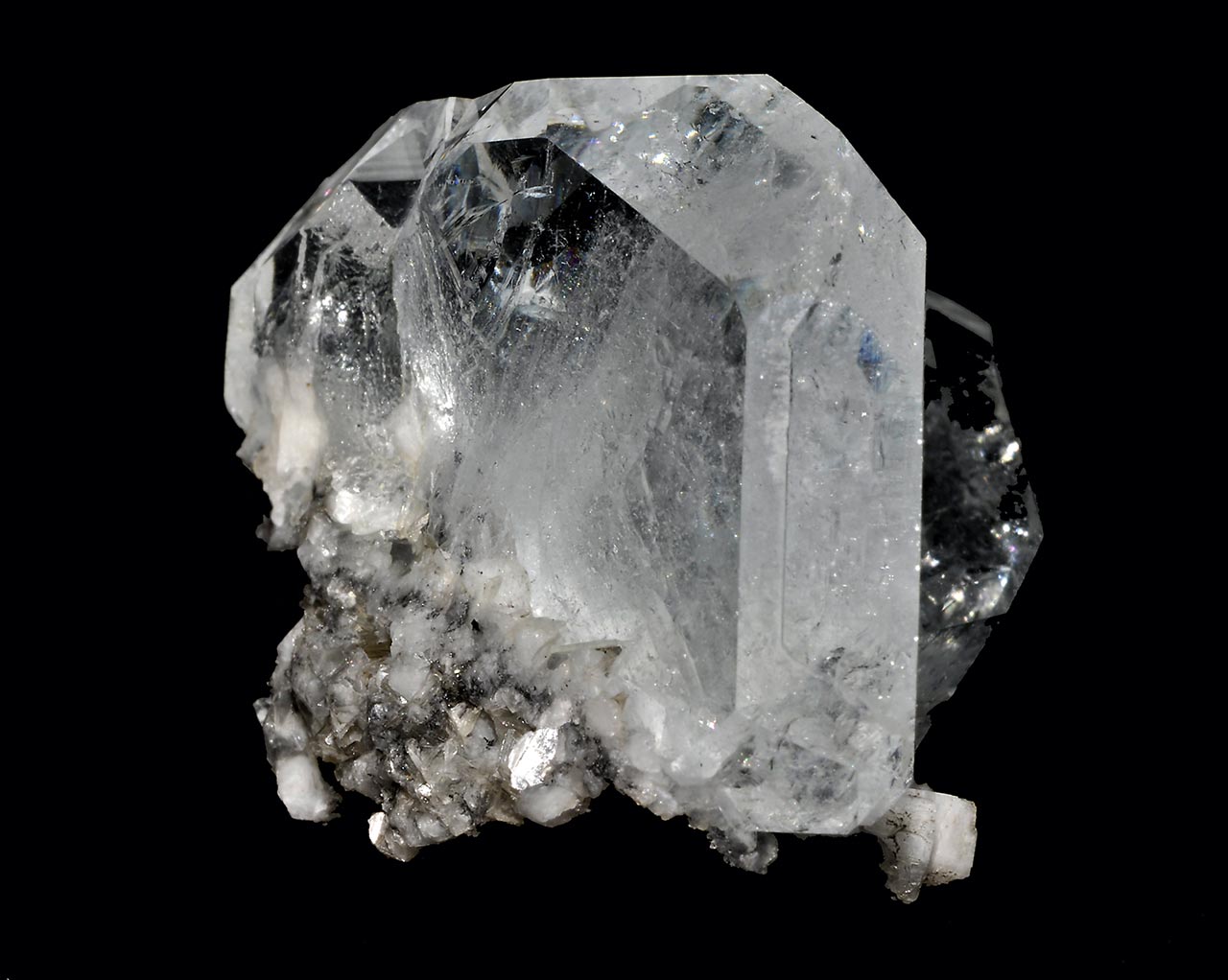
Goshenite often occurs together with aquamarine. Well known localities include Gilgit in Pakistan, Nuristan in Afghanistan, Minas Gerais in Brazil, Pingwu in China and Erongo in Namibia. Beryl pegmatites in Maine and California also produce goshenite specimens.
Emerald
The color of emerald is caused by the presence of Cr3+ in the structure which is quite unlikely to occur in places with abundant beryllium. Green color of emeralds from Brazil and Zimbabwe is caused by the V5+. This is the reason for the overall scarcity of emeralds. Interaction of highly fractionated felsic rocks or Be-rich marine sediments with mafic rocks containing Cr3+ or V5+ is necessary for emerald formation.
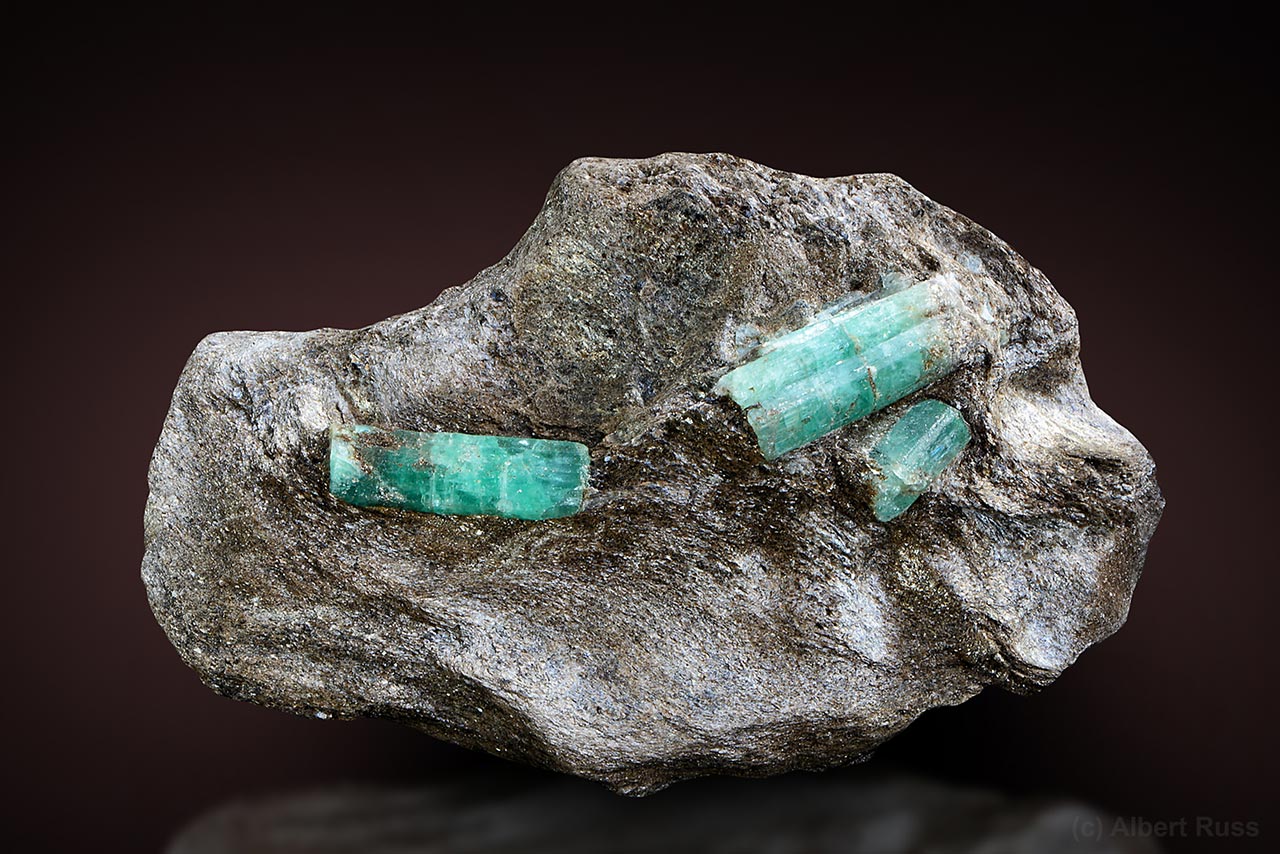
Because of the common occurrence of internal imperfections and inclusions, flawless gem quality emeralds are rarer and more expensive than gemmy diamonds. Demand for gem quality emeralds is the incentive for the development of many ways to create fraudulent gems. The first synthetic emeralds were produced in 1848. Techniques for faking emeralds are numerous: one of the most common practices is filling any flaws with oil or synthetic lubricants under high pressure. Other ways to fabricate emeralds include dyeing and or cutting green glass, dyed chalcedony, peridot, tourmaline, demantoid, tsavorite or even prehnite and fluorite. Currently, fake emeralds are indistiguishable from natural emeralds, and without an advanced laboratory test, there is no way to identify them. Beware of tricky trade names like emeraldine or oriental emerald, biron emerald, medina emerald etc. - almost all are fakes!
Superb quality gemmy emeralds come from calcite veins in Muzo Mines in Colombia. Trapiche emeralds from Boyaca area, Colombia, contain star shaped pattern of carbon impurities inside the emeralds. Trapiche emeralds are often processed into cabochons.
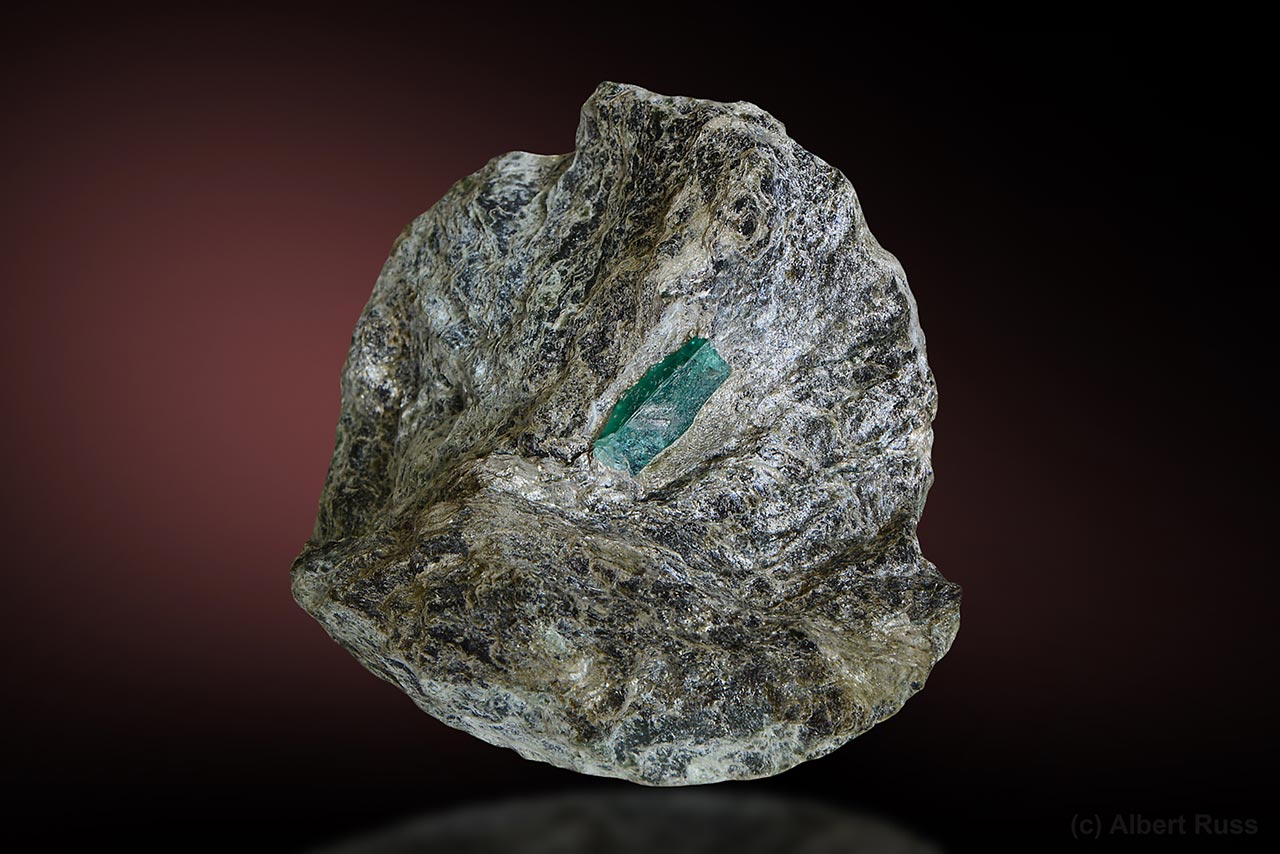
Recently, superb quality emeralds were discovered in Zambia. Emeralds also occur in mica schists in Ural mountains, Russia and Habachtal, Austria. Ancient emerald mines were operated in Egypt. The legendary Emerald Tablet (Tabula Smaragdina) was cut of the single emerald, probably from Egypt. Other emerald deposits are located in Brazil, China, Mozambique, Madagscar, Zimbabwe and India.
Morganite
The pink variety of beryl was named morganite after J. P. Morgan. It is a typical variety of highly evolved LCT pegmatites. The color is caused by the presense of Mn2+ : morganite also contains significant amounts of Na+, Cs+ and Li+. The incorporation of Cs+ and Li+ distorts the hexagonal symmetry of the beryl structure and probably causes short prismatic crystal shapes. High amounts of these elements combined with a distorted crystal shape cause problems with distinguishing morganite from pezzottaite. Recent analyses have demonstrated that some morganites from Afghanistan are in fact pezzottaites.
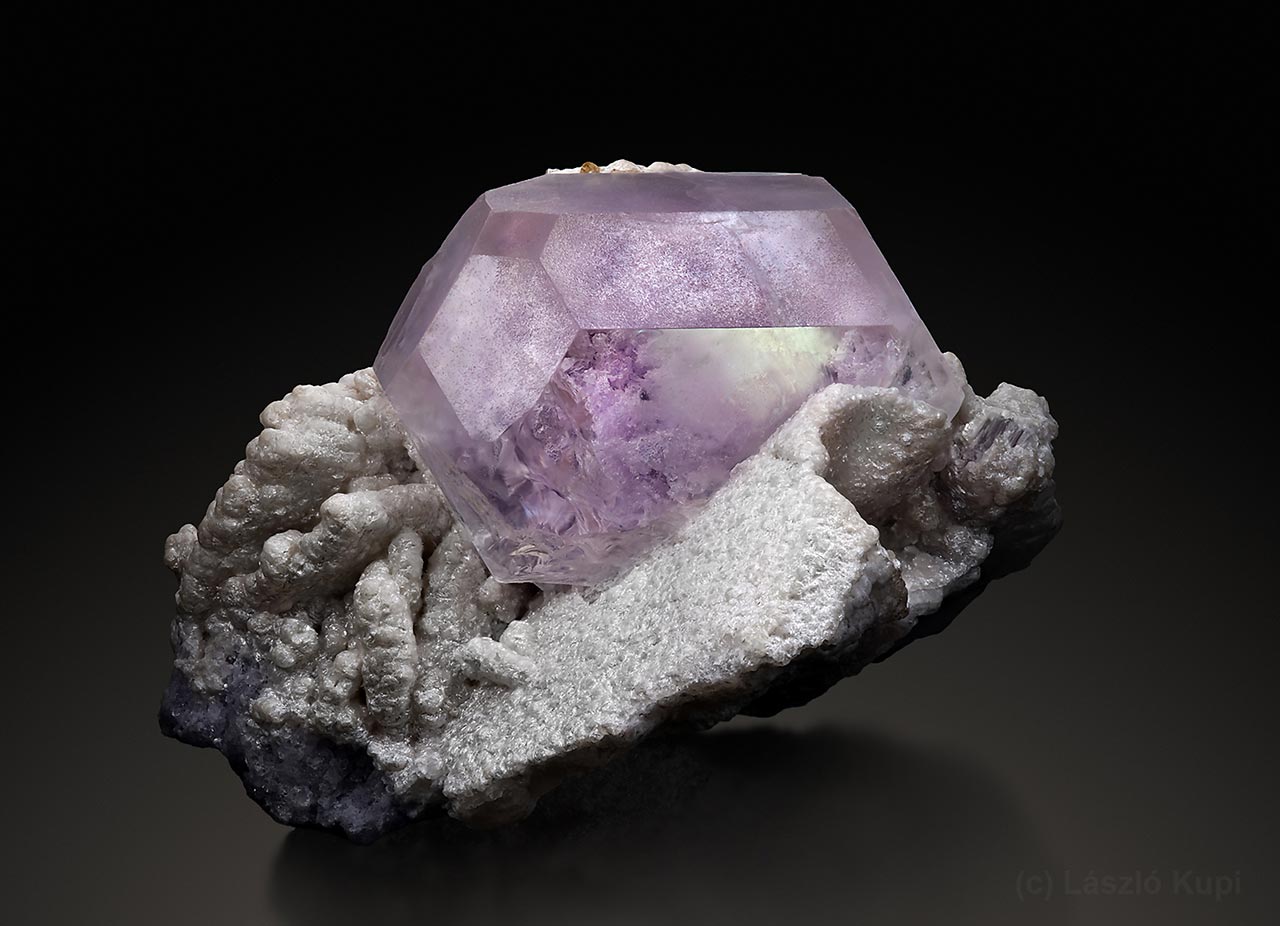
Many Li-pegmaties worldwide are famously known for their morganites. Bennett Quarry in Buckfield, Maine produced The Rose of Maine - the morganite crystal 23 x 30 cm large and weighing an impressive 23 kg. Various pegmatites in Pala area in California produced some impressive morganite specimens too. Great finds were produced also in Nuristan and Pech, Afghanistan and Skardu in Pakistan. Numerous pegmatites in Minas Gerais, Brazil and in Madagascar produced very nice crystals as well.
Heliodor and Golden Beryl
The name heliodor is derived from greek words helios (sun) and donor (to give). Heliodor's yellow color is caused by the presence of Fe3+ in the beryl structure. Heliodors are usually quite clear and contain only a small percentage of inclusions. Sometimes, the terms heliodor and golden beryl are considered synonyms. Sometimes, golden beryl refers to gemmy yellow beryl and heliodor to gemmy yellow-green beryl.
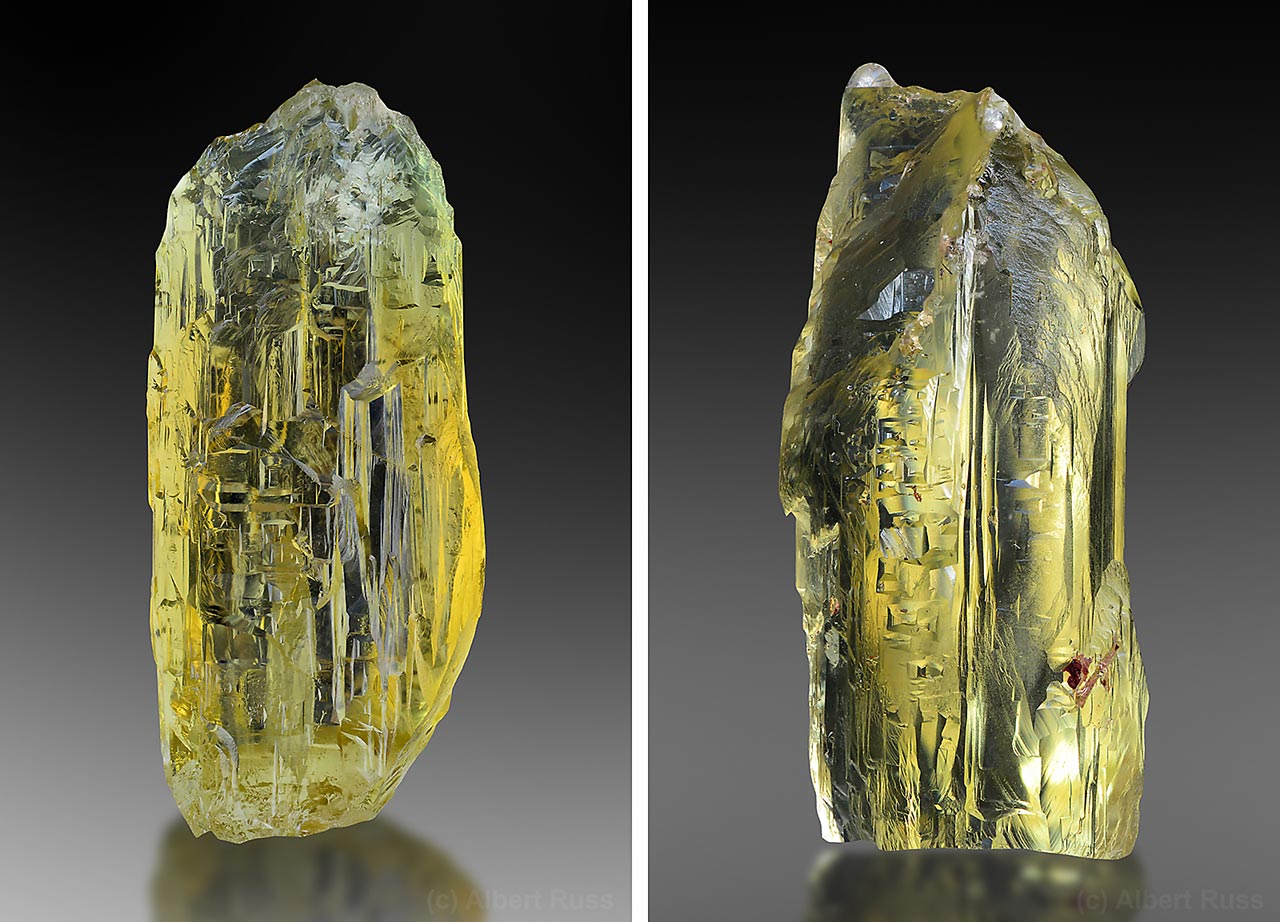
There was a serious issue with faked heliodors, created using irradiated aquamarines from Afghanistan. Fake localities of these treated beryls included Afghanistan, Pakistan, Tajikistan and Russia. There is no evidence of heliodor occurence in the Afghanistan, Pakistan or Tajikistan - be very suspicious if you see heliodors from these countries!
The largest and most gemmy naturally etched heliodor crystals come from pegmatites in Volodarsk near Volyn, Ukraine. Other great heliodors were discovered in Murzinka and Mokrusha pegmatites in Ural mountains, Russia. Etched heliodors were found in Pisek, Czech Republic.
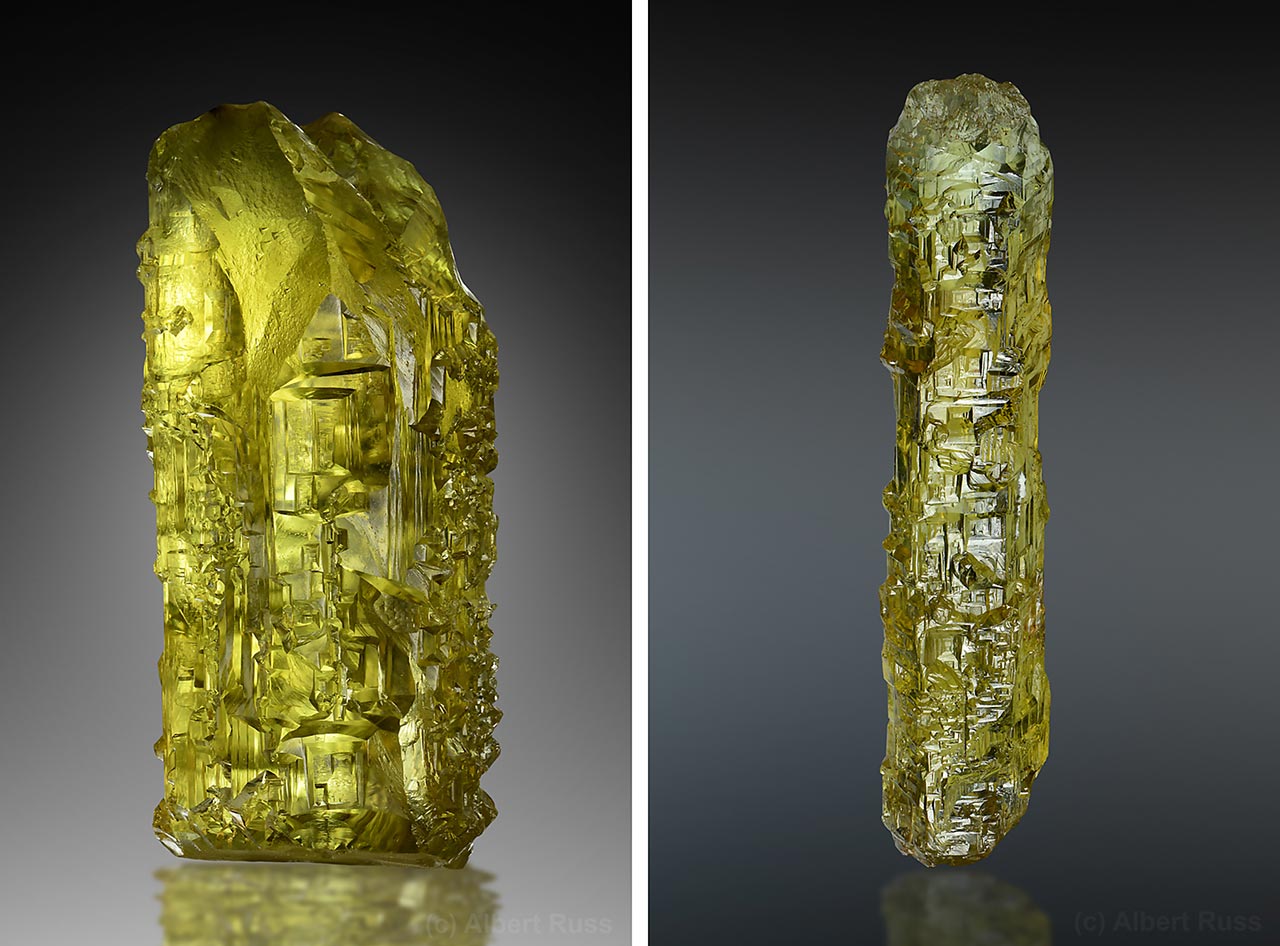
The first heliodors were described from both Erongo Mountain, Namibia and Lichtfield County in Connecticut, USA. There are dozens of heliodor-bearing pegmatites in the USA - especially in California, Maine, New Hampshire, North Carolina and Connecticut.
Heliodor localities in Brazil include famous Sapucaia pegmatite, Mimoso do Sul Mine and Jequitinhonha Valley area. Some pegmatites in Antananarivo province on Madagascar produced heliodors, as well as some pegmatites in South Africa, Zimbabwe and Nigeria. Ancient localities include gem-bearing gravels on Sri Lanka.
Bixbite - the Red Beryl
Bixbite is a deep red or cherry red variety of beryl. It was discovered in 1904 on Maynards Claim in Thomas Range, Utah, USA. The use of the variety name bixbite is discouraged by many scientists as it leads to confusion with the mineral bixbiyte (Mn,Fe)2O3. Bixbiyte is black and unfortunately occurs together with the red beryl at the same localities. The deep red color of the red beryl is probably caused by trace amounts of Mn3+.
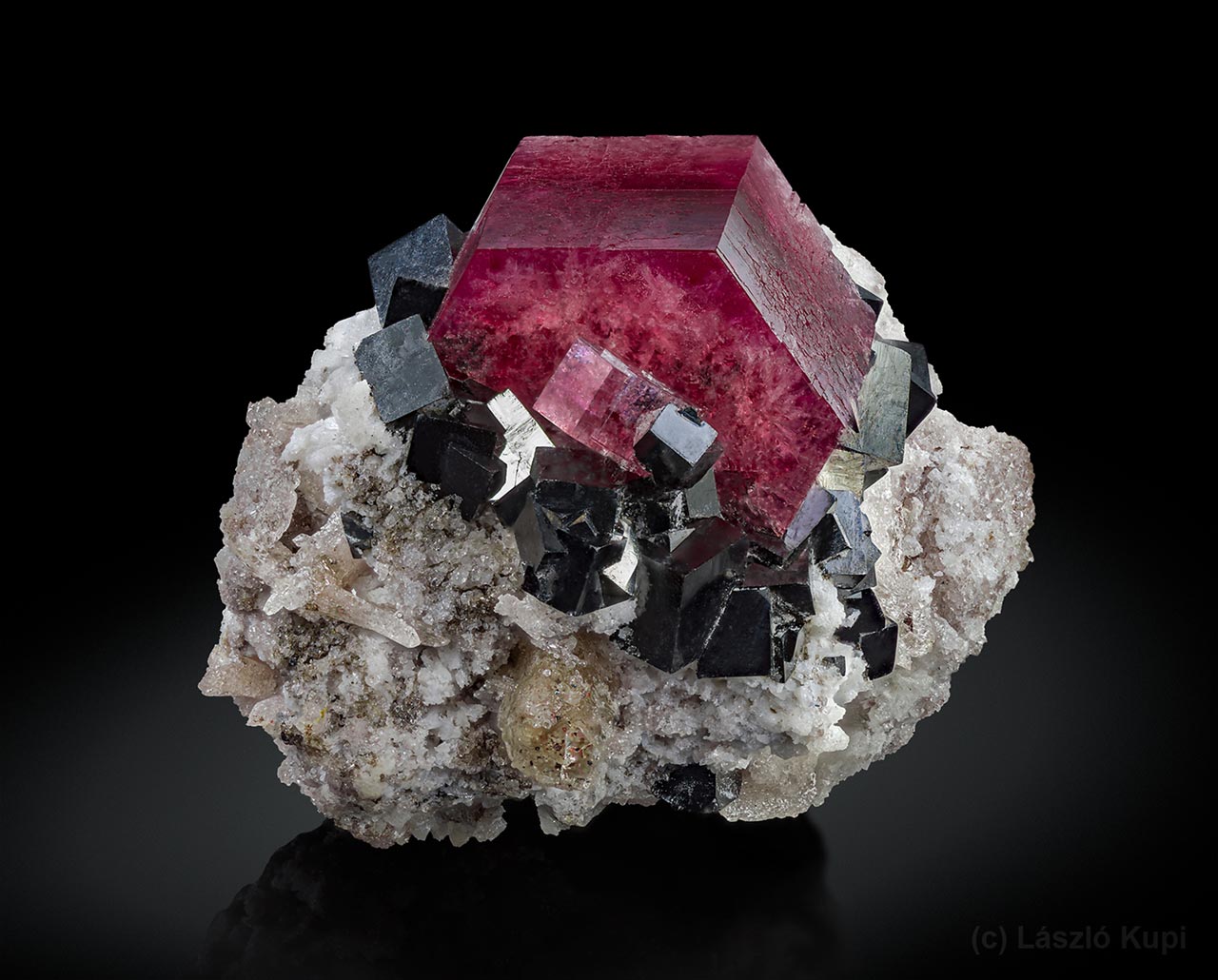
Red beryl is quite rare and most localities are limited to the rhyolites in Beaver County and Juab County in Utah and Sierra County in New Mexico. The most famous locality is probably Wah Wah Mountains in Utah.
Red beryl is very popular among collectors because of its aesthetics and scarcity. Rare gem quality red beryls can be faceted.





Comments